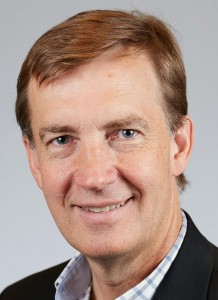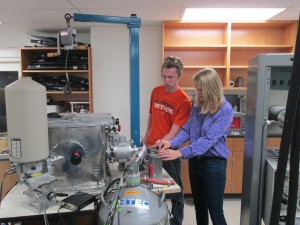sabbatical (n): a break from customary work to acquire new skills or knowledge, traditionally occurring every seventh year
Breaks Away: Sabbatical Stories of Hope
Each academic year, a number of Hope faculty take sabbatical leaves away from the college, submersing themselves for extended periods of time into their favored fields of inquiry. If viewed from above and all together, those fields would look like a calico landscape, so varied and colorful is the topography of their collective research, writing, and creative pursuits. Offering restoration and adventure both, sabbaticals are a bit like information and imagination transfusions. These breaks away from normal classroom and committee work give Hope academicians a boost to reinforce and revitalize their teaching and scholarship.
On a scale of sedentary to prolific, the yearlong break away of Dr. Graham Peaslee, the Elmer E. Hartgerink Professor of Chemistry and Environmental Science, can be best described as super-productive. If there was such a thing as barometric sabbatical pressure, Dr. Peaslee crushed it.
To wit:
- He gave talks at 27 venues in nine U.S. states and Australia;
- He crossed the Pacific Ocean four times in July alone, and his watch hasn’t been the same since;
- He wrote three successful grant proposals to the Department of Energy, National Science Foundation (NSF), and the Australian government, collaborated on Hope’s successful Dow Foundation proposal, and has two more proposals still pending to the Department of Defense and the NSF;
- He wrote three other grant proposals but received “thanks-but-no-thanks” replies;
- He published five peer-reviewed papers during the year and submitted three more after classes started this fall; and,
- He registered a patent with the United States Patent and Trademark Office.

One last thing, but I’ll wait while you catch your breath…..
- Dr. Peaslee co-founded a new company— along with Hope colleague, Dr. Peter Boumgarden, assistant professor of economics, and Hope alum, Evelyn Ritter ’15, a mechanical engineer — called University Market Partners (UMP) Analytical that tests for the presence of perfluorinated alkyl substances (PFASs) in consumer products. PFASs — human-made chemicals found in flame retardant, stain- and water-resistant materials such as carpet, furniture fabrics, textiles and outdoor clothing, cosmetics, fire-fighting foam and even the liner of microwave popcorn bags — are concerning for their long environmental lifetimes, bioaccumulation and toxicity, and thus their impact on human and animal life. Another NSF grant got UMP launched, and NSF featured UMP’s work on its website.
“Sabbatical is a time to see where you are and where you want to go,” says Dr. Peaslee, who obviously went to a lot of places in mileage and mind. “It’s a time to put your efforts into your passions.”
“When I stop to think about it, it really makes me angry. There are over 500 (PFASs) and only two have been voluntarily removed from the U.S. market,” he says firmly. “No one eats microwave popcorn in my household anymore.”
Since his passions are the environment and chemistry combined, UMP’s creation perfectly explains where Dr. Peaslee’s newest trek is going. His road is mapped by analytic and nuclear chemistry; his destination is science policy as much as science itself. Those microwave popcorn bags with PFASs? Denmark recently removed them from their grocery store shelves. Understandably, Dr. Peaslee would like to see PFASs removed from all food packaging materials in the U.S.
“When I stop to think out it, it really makes me angry. There are over 500 (PFASs) and only two have been voluntarily removed from the U.S. market,” he says firmly. “No one eats microwave popcorn in my household anymore.”

Most Saturdays — and any other day of the week, really — Dr. Peaslee can be found with a team of students conducting PFAS testing using the Pelletron particle accelerator, a piece of pricey equipment he acquired with an NSF grant in 2004, in his lab on Hope’s campus. The company’s workers take an existing yet refined nuclear process that Dr. Peaslee and Dr. Paul DeYoung, the Kenneth G. Herrick Professor of Physics, discovered about a year ago and tests for PFASs in minutes when once the testing required days. While paying back colleges and universities like Hope for their accelerator’s use, and giving Hope students experience and employment to boot, UMP is just as importantly able to provide a low-cost PFAS screening method for non-profit groups such as The National Resource Defense Council, the Environmental Defense Fund, and the Environmental Working Group. It’s a win-win-win for Hope, the environment and humans.
Of course, Dr. Peaslee’s priority remains teaching and researching at Hope while he runs UMP with his partners. Follow him on Twitter @gfpeaslee. You’ll find his feed full of scientific engagement with students and colleagues, from watershed experiences to cyclotron experiments.
Would you expect anything else from a super-productive professor?
—
Dr. Graham Peaslee is the Elmer E. Hartgerink Professor of Chemistry and Environmental Science in the Chemistry and Biochemistry Department at Hope College.

